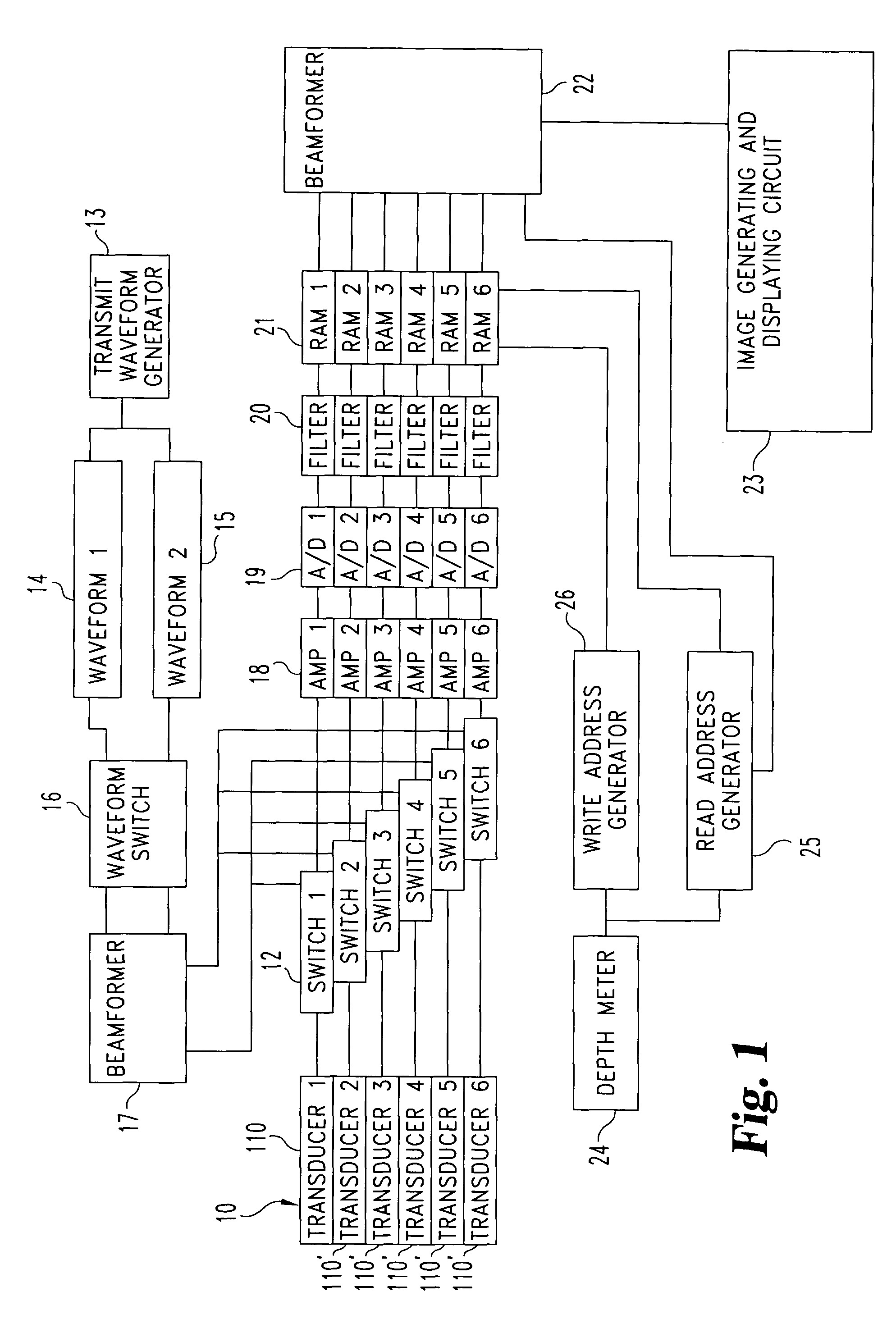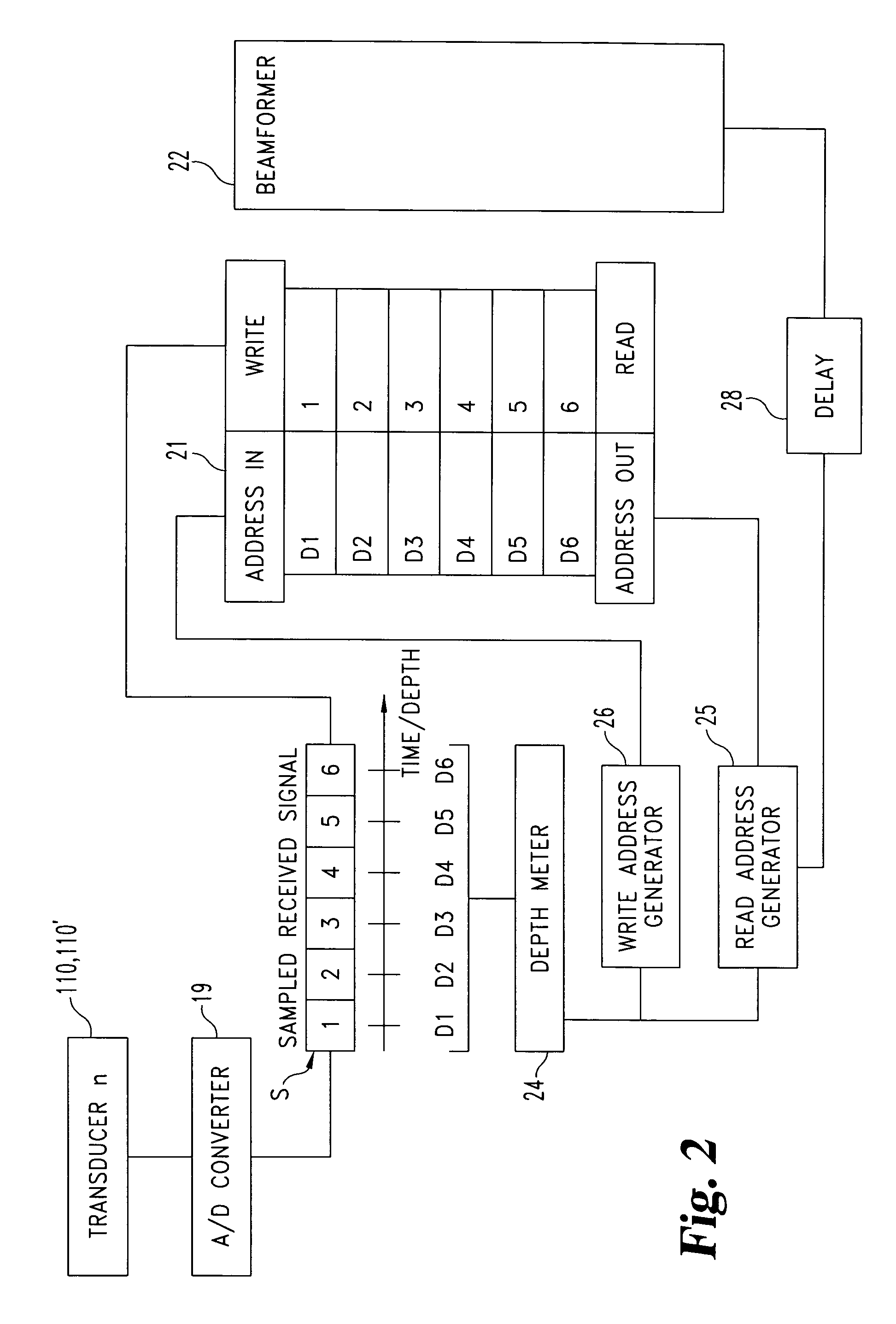Ultrasonic imaging method and apparatus
a technology of ultrasonic imaging and apparatus, applied in the field of ultrasonic probes, can solve the problems of preventing the attainment of sufficient image quality, receiving signals, and long processing time of proposed methods, and achieves the effects of high implementation cost, easy implementation, and high complexity of apparatus
- Summary
- Abstract
- Description
- Claims
- Application Information
AI Technical Summary
Benefits of technology
Problems solved by technology
Method used
Image
Examples
Embodiment Construction
[0059]Referring to FIG. 1, an ultrasonic imaging apparatus includes a probe 10 composed of a plurality of transducers 110. For the sake of simplicity, the figure only shows six electroacoustic transducers, forming a linear array. Nevertheless, it shall be noted that the invention is not limited to the linear array probe, but may be also applied to other types of probes.
[0060]The individual transducers 110 are diversified by numbering them from 1 to 6. Typically, linear array probes have 64 to 256 electroacoustic transducers, acting as transmitting and receiving transducers. Each transducer is connected to a switch 12 which alternately connect them to an ultrasonic wave generating signal supply and to the receiving circuit.
[0061]The transducer transmission actuating signal is provided by a generator 13 which supplies two waveformers 14 and 15. The signal consists of a pulse having a predetermined duration and a predetermined frequency, which will cause the generation of an ultrasonic...
PUM
 Login to View More
Login to View More Abstract
Description
Claims
Application Information
 Login to View More
Login to View More - R&D
- Intellectual Property
- Life Sciences
- Materials
- Tech Scout
- Unparalleled Data Quality
- Higher Quality Content
- 60% Fewer Hallucinations
Browse by: Latest US Patents, China's latest patents, Technical Efficacy Thesaurus, Application Domain, Technology Topic, Popular Technical Reports.
© 2025 PatSnap. All rights reserved.Legal|Privacy policy|Modern Slavery Act Transparency Statement|Sitemap|About US| Contact US: help@patsnap.com



